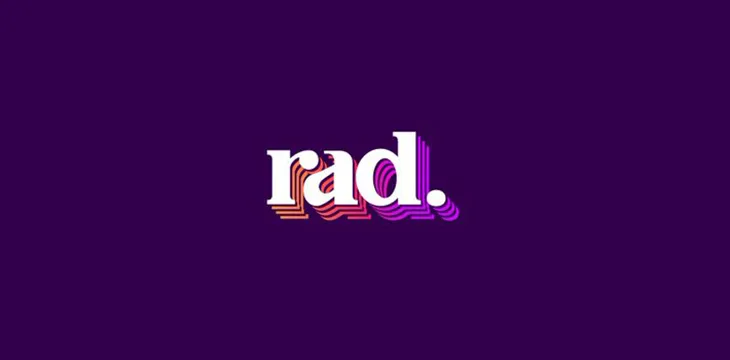|
Getting your Trinity Audio player ready...
|
Ayre Ventures, the Ayre Group’s venture capital division, has announced a significant investment in Rad NFTV, the innovative content distribution and NFT streaming platform that is looking to BSV for help in managing the increasingly complex NFT/Web3 ecosystem.
Rad began life midway through the last decade under the name Littlstar, a streaming network with a focus on virtual reality (VR) video content. Littlstar was a launch partner on all the major VR devices and headsets, including PlayStation VR, Oculus and Google Daydream. Littlstar also had content deals with major film and TV studios, including Disney, Fox, NBCUniversal and Viacom.
While Littlstar was able to build trust on the content side with these companies as well as a respectable customer base via its consumer-facing app, Rad CEO Tony Mugavero told CoinGeek that the VR content produced by the studios at the time was largely exploratory, and the companies began scaling back or shutting down their VR operations around the end of 2017.
With VR not yet ready for prime time, Rad began supporting traditional video content, which offered access to a broader range of devices beyond VR headsets. Rad inked a raft of partnerships that saw its app appear on PlayStation 5, Android TV and Apple devices. More recently, Rad struck a deal with Chinese tech giant Huawei that will see its app pre-installed on a couple hundred million TVs.
However, the shift to traditional video streaming meant Rad was now in competition with mainstream giants such as Netflix and Hulu, leaving the company searching for an answer to why consumers should choose their service. Having been an early adopter of Bitcoin and other major digital assets, Mugavero began studying the potential advantages that blockchain technology could offer.
Ahead of the curve
In 2017, Mugavero wrote a white paper based on his view that content should be using smart contracts to handle revenue shares/resales and should be loosely coupled to a content delivery network.
The platform that emerged was powered by Ara, a P2P ecosystem with built-in commerce and content delivery layers. It allowed network peers to host and deliver content, creators to sell content through the network and consumers to purchase content. Peers were rewarded with an Ethereum-based token called ARA, while those who were either pushing content in or pulling it out were interacting with blockchain tech to prove ownership.
But once again, Rad found itself ahead of the curve. Major content providers were happy to take meetings with Rad to discuss this promising new technology, but these meetings always ended with expressions of enthusiasm for the future possibilities without any concrete plans for the here and now.
Things changed dramatically around the end of 2020 as interest in the NFT space exploded thanks to NBA Topshot. That led consumers to the OpenSea marketplace, which enjoyed exponential volume growth from one month to the next. Seizing the moment, Rad announced plans for its own NFT marketplace in 2021.
No ice bucket challenge videos
Rad’s initial forays into the NFT world saw it launch some auctions directly on its platform, mainly comprised of a few “higher touch” efforts with fashion outfit DKNY and streaming giant Cinedigm that Mugavero said allowed Rad to “get a handle on what’s working and what’s not.”
Brooklyn Earick, CMO at Rad NFTV, didn’t see pitching its services to the hordes of individuals creating vacation videos or TikTok dances. Instead, Rad focused on “the premium end of YouTube,” aka the creators of animated series, short films and the like.
In stark contrast to the prevailing model that requires creators to engage with as many as five or six different services to launch an NFT initiative, the Rad platform’s tools offer creators everything they need to create/distribute/market their own NFTs without needing to talk directly to Rad. Earick says this one-stop-shop concept “has been resonating really well with the NFT natives as well as our existing content partners who are now saying ‘how do we get into this.’”
Rad’s team has a number of members who are well familiar with Ethereum, and Earick said that chain was “the tip of the spear to build for.” However, Earick noted that “it’s very expensive to build [on Ethereum] from a gas perspective.” (Ethereum’s inherent volatility was on full display last Friday as gas prices soared with the launch of the NFT-affiliated APE token.)
The hurdles imposed by Ethereum’s unpredictable transaction fees were among the factors that led the Rad team to investigate BSV’s potential role in Rad’s operations. Earick said BSV’s clear advantages in terms of cost and scale were “obviously very interesting” because “if you present consumers with options, they’ll largely gravitate towards the one that creates the least friction, makes their lives easier and costs less.”
BSV holds the same appeal for creators who face the costs of minting hundreds or even thousands of individual NFTs to launch their own collection. “If they have the option of doing so at x price and 100x price, they’ll naturally gravitate toward the cheaper option.”
The BSV blockchain’s commitment to large blocks also allows creators to include a greater amount of NFT metadata on-chain. While BSV’s capacity has yet to scale to the point where it makes sense to upload Blue Ray-quality copies of every film in a studio’s library, creators can include cast information, subtitles and other metadata that add value to individual NFTs.
The master plan? A master ledger
Mugavero is even more intrigued by what BSV can offer a company’s back office operations, including distributing files that require a chain of custody. Mugavero cited the example of film editors submitting changes for review, which may involve multiple individuals in multiple departments. BSV can be used for entitlements inside an organization with the ability to track an asset’s progress, an option that Mugavero said a number of studios have expressed interest in exploring.
However, this interest would quickly cool if the studios faced paying excessive ETH gas fees every time an asset is transferred within a large organization. “If it’s pennies, it’s not a big deal. If it’s $100 every single time they move around ownership, that’s a problem.”
Mugavero also sees great potential in using BSV to enable “highly complex payout setups like royalty payments.” A movie or music project may involve hundreds of individuals, each of whom performed different roles with different compensation structures. A complex smart contract would be required to manage all those payouts each time an asset is sold and certain benchmarks are reached, which again only makes sense if the chain on which that contract operates has a low-fee structure of the type offered by BSV.
Currently, if you wanted to understand all NFT activity across all chains, you’d need to write bots to scrape data from each individual chain, then somehow cobble those separate files into a single database. Mugavero says Rad plans to use BSV as “an aggregator of all cross-chain data, so if someone mints something on Ethereum or Solana or wherever, Rad can in parallel fire off an entry into BSV, so it becomes a master ledger.”
Mugavero says “there’s an interesting opportunity there as a source of truth across the ecosystem. That could potentially be done on various different chains but that’s where the low cost and potential larger amounts of metadata capabilities come in on the BSV side.”
Mugavero says BSV’s ability to manage “the guts of the business” will have strong appeal for entities looking to bring a greater sense of order to the burgeoning NFT sector. Rad is already building on BSV and will soon be minting NFTs on Testnet, and Mugavero expects to have a cross-chain single ledger of transactions in place within 12 months.
Like many pioneering technology outfits, Rad has long been ahead of the curve, waiting for the rest of the world to catch on to what it already knows. At long last, with a little boost from BSV, Rad is poised to reap the benefits of being in the right place at the right time.
Watch: CoinGeek New York panel, The New World of NFTs

 09-15-2025
09-15-2025 





